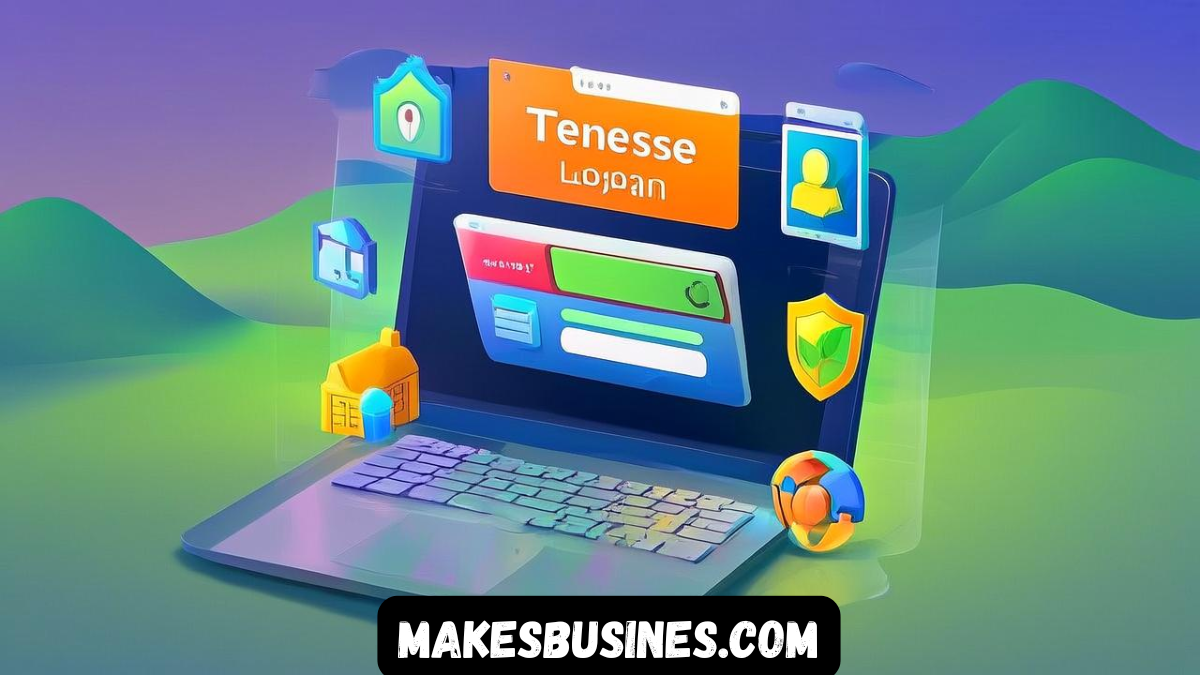Understanding TeIDS and Its Purpose
TeIDS Login The Tennessee Education Information Delivery System, widely known as TeIDS, is a centralized digital platform used in Tennessee for managing and delivering various educational services and data. Developed by the Tennessee Department of Education, this platform aims to improve administrative efficiency, support educational outcomes, and streamline communications among educators, administrators, and service providers. The core purpose of TeIDS is to create a unified portal where professionals in the field of early childhood education, particularly those involved with early intervention and preschool services, can securely access and manage essential data.
In today’s digital-first world, education systems require robust platforms that can manage complex datasets while ensuring compliance with federal and state privacy laws. TeIDS plays a pivotal role in enabling early interventionists, preschool program coordinators, and administrators to input, track, and analyze information about children who are receiving support services across Tennessee. Whether it’s coordinating with local educational agencies or maintaining individual service plans for children, the platform ensures a seamless experience for its users.
The Evolution of TeIDS Login Systems
The login process to any data management platform must strike a balance between security and user-friendliness. TeIDS has evolved over time to ensure this balance is achieved. Initially, the login process was fairly standard, involving username and password credentials set up by administrators. However, as security standards advanced and the sensitivity of the data TeIDS Login managed through TeIDS grew, the system integrated more secure features such as multi-factor authentication (MFA), password expiration policies, and encrypted sessions.
This evolution also included improvements to the user interface. For instance, accessibility features were added to accommodate users with disabilities, and the design was optimized for use on different devices including tablets and laptops commonly used in the field. These upgrades ensured that educators could access necessary data quickly and securely, especially in situations where real-time updates were crucial for decision-making.
How TeIDS Supports Early Intervention Services
TeIDS is most prominently used within Tennessee’s Early Intervention System (TEIS), which provides services to infants and toddlers with disabilities and developmental delays. The login system enables credentialed users to enter secure areas of the platform where they can access child profiles, assessment data, service records, and progress notes.
Once logged in, providers can create Individualized Family Service Plans (IFSPs), track attendance for therapy sessions, log service delivery, and communicate with other team members involved in a child’s care. This centralization of data reduces redundancies, minimizes errors, and helps in monitoring the outcomes for each child receiving services. Moreover, by using the same login credentials, users can maintain continuity even if they are working across different agencies or programs within the state.
The Role of User Credentials in TeIDS Login
A key aspect of TeIDS login is the distribution and management of user credentials. Typically, new users must request access through their employer or agency, which then works with the Tennessee Department of Education to create a user profile. The initial setup may involve verification of professional qualifications, submission of identification, and agreement to confidentiality and data use policies.
Once credentials are issued, users are responsible for maintaining the security of their accounts. This includes regularly updating passwords, not sharing login information with unauthorized persons, and promptly reporting any suspicious activity. The platform’s backend monitors login patterns to detect anomalies such as repeated failed login attempts or access from unfamiliar locations, thus adding an additional layer of protection to sensitive educational data.
Troubleshooting TeIDS Login Issues
Like any secure platform, users occasionally encounter login issues. These can range from forgotten passwords and expired credentials to browser incompatibilities and system maintenance downtime. To address these concerns, the TeIDS support team provides comprehensive technical assistance, including user guides, FAQs, and direct contact support.
Most login issues can be resolved through the “Forgot Password” feature, which sends a secure password reset link to the user’s registered email address. In cases where the email address has changed or the account has been locked due to multiple failed login attempts, users may need to contact their agency administrator or the central TeIDS support team for resolution.
Furthermore, users are advised to ensure that they are accessing the most current version of the TeIDS login portal. Using outdated bookmarks or typing incorrect URLs can sometimes lead to login errors or phishing risks. Ensuring browser compatibility and enabling cookies are also essential for a smooth login experience
Security Measures Integrated in the Login Process
Given the sensitive nature of the data managed through TeIDS, the login process incorporates several advanced security features. These include encryption protocols that protect data as it travels between the user’s device and the TeIDS servers. Session timeouts are automatically enforced after a period of inactivity to prevent unauthorized access. Additionally, multi-factor authentication is increasingly being implemented to ensure that even if login credentials are compromised, access remains restricted.
Administrative controls also allow system administrators to set permissions for individual users. This means that each login grants access only to the parts of the system relevant to the user’s role. For instance, a therapist may only see data for the children they are serving, while a program coordinator may have broader access for monitoring and reporting purposes. This role-based access control ensures both usability and security within the system.
Training and Support for Users
Understanding how to effectively use the TeIDS login system and its features requires proper training. The Tennessee Department of Education periodically offers workshops, webinars, and instructional materials to help users navigate the platform. These training programs often cover topics like how to create secure passwords, how to use multi-factor authentication, how to reset a password, and how to securely log out of the system.
Moreover, user support extends beyond the initial login process. Once inside the platform, users can access help sections and context-sensitive tips that guide them through completing tasks, entering data, or generating reports. This approach empowers educators and providers to focus on their primary roles without being bogged down by technical difficulties.
The Importance of TeIDS Login for Statewide Data Integrity
One of the core benefits of a secure and well-managed TeIDS login system is the integrity it brings to educational data statewide. Because data is entered and accessed through authenticated accounts, the platform maintains a reliable audit trail of who did what and when. This traceability is critical for program evaluation, compliance monitoring, and continuous improvement efforts.
Data integrity also supports state and federal reporting requirements. For example, the Individuals with Disabilities Education Act (IDEA) mandates certain data collections and accountability measures. TeIDS helps ensure that the state meets these requirements by maintaining a consistent, validated database that is updated in real time by authorized users.
Integration with Other Educational Systems
Another noteworthy feature of TeIDS login is its ability to interface with other educational data systems within the state. These include platforms for student assessments, teacher licensure, special education programs, and more. Integration between these systems ensures that educators and policymakers have a holistic view of a child’s educational journey.
Through secure login and user verification, TeIDS ensures that data from different systems can be cross-referenced without compromising privacy. For example, when a child transitions from early intervention to preschool, the data can follow them within the system, making the handoff smooth and efficient. This interconnectivity underscores the importance of a stable and secure login infrastructure.
Enhancements and Future of TeIDS Login
As educational technology continues to evolve, so too will the TeIDS platform and its login systems. Planned enhancements include greater mobile compatibility, real-time collaboration tools, and even AI-driven data analytics that help providers make informed decisions faster. Security upgrades will remain a priority, with the possibility of introducing biometric authentication or single sign-on (SSO) features in the future.
The future of TeIDS login also includes greater user customization, such as the ability to tailor dashboards to individual user roles and preferences. This personalization will not only make the system easier to use but will also enhance productivity and satisfaction among users. As Tennessee continues to invest in educational innovation, platforms like TeIDS will be at the forefront of delivering efficient, data-driven, and secure services to educators, families, and children.
Conclusion
The TeIDS login system is more than just a gateway to a database—it’s a vital tool that supports the delivery of high-quality educational and intervention services across Tennessee. By ensuring secure, role-specific access to critical data, TeIDS enables professionals to serve children more effectively, meet compliance standards, and promote positive outcomes across the state.
From its evolving security features and user-friendly interface to its importance in data integrity and cross-system integration, TeIDS is a model of how educational information systems should function. Whether you are a new user trying to gain access for the first time or a veteran educator logging in to update a child’s progress, the TeIDS login is the key to a more connected and informed approach to education.
FAQs
What is TeIDS used for?
TeIDS is used by Tennessee’s educators and service providers to manage data related to early intervention and preschool services, ensuring efficient and secure information sharing.
How do I get a TeIDS login?
Users typically request access through their employer or agency, which coordinates with the Tennessee Department of Education to set up user credentials.
What should I do if I forget my password?
You can reset your password using the “Forgot Password” feature on the login page, or contact your agency administrator for assistance.
Is TeIDS secure?
Yes, TeIDS uses encryption, multi-factor authentication, and role-based access to ensure data security and integrity.
Can I access TeIDS from mobile devices?
While primarily optimized for desktops and TeIDS Login is increasingly being updated for mobile compatibility.
Who maintains the TeIDS platform?
The Tennessee Department of Education is responsible for the maintenance, upgrades, and security of the TeIDS system.




